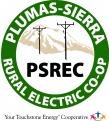Prior to 1935, life in rural America generally started at sunrise and ended at sunset. That’s because nine out of 10 rural homes had no electric service.
While it was technically possible to deliver electricity to rural areas, it was not deemed necessary or economically feasible by the power companies.
Rural residents close to a power company’s line were required to pay the full cost of connecting their homes to the system. In many cases, that fee was nearly twice the annual farm income.
Once that initial investment was made, rural consumers discovered they would have to pay 10 to 12 cents a kilowatt-hour (kWh)—double the rate for urban customers. In some cases, the charge was as high as 40 cents per kWh.
That essentially ensured rural America remained in the dark. President Franklin D. Roosevelt’s rural electrification program changed that, transforming the country through federal low-interest loans designed to electrify all of America.
Most of the loan recipients were newly formed rural electric cooperatives. Today, nearly a thousand locally owned co-ops provide power to 35 million people—11 percent of the nation—in 46 states.
But electrifying the country wasn’t easy. For years, power companies ignored rural areas—except those heavily populated, easy to reach and well off economically. That assured them of maximizing their profits.
Even with federal money available, most for-profit investor-owned utilities (IOUs) weren’t interested in extending service to rural areas. If rural America were to have access to electricity, rural residents would have to make it happen. Working together for the common good was not a new concept for farmers, who had organized agriculture- oriented co-ops.
Now hungry for electricity, rural Americans journeyed up and down country roads seeking support for development of electric cooperatives. By and large, they were successful. Today, electricity is available to more than 99 percent of the nation’s rural residents—mostly through electric co-ops.
To perform their mission, electric cooperatives own and maintain 2.3 million miles—44 percent— of the nation’s electric distribution lines, covering three quarters of the nation’s land mass. Their assets top $70 billion. And they provide electrical service in a way far different than IOUs.
Electric cooperatives are private, independent electric utilities owned by the members they serve. Electric cooperatives are democratically governed businesses organized under the Cooperative or Rochdale Principles, anchoring them firmly in the communities they serve and ensuring that they are closely regulated by their member owners.
To give you a better understanding of the important role cooperatives provide to their communities, we have laid out information on the history of cooperatives, their principles, and our efforts in creating new co-ops.
Rural cooperatives in America self-govern and operate based on the Rochdale Principles, which are a general statement of how a cooperative operates (as opposed to traditional investor owned utility). The Rochdale Principles were first set out by the Rochdale Society of Equitable Pioneers in Rochdale, England in 1844 and have formed the basis for the principles on which cooperatives around the world operate to this day.
